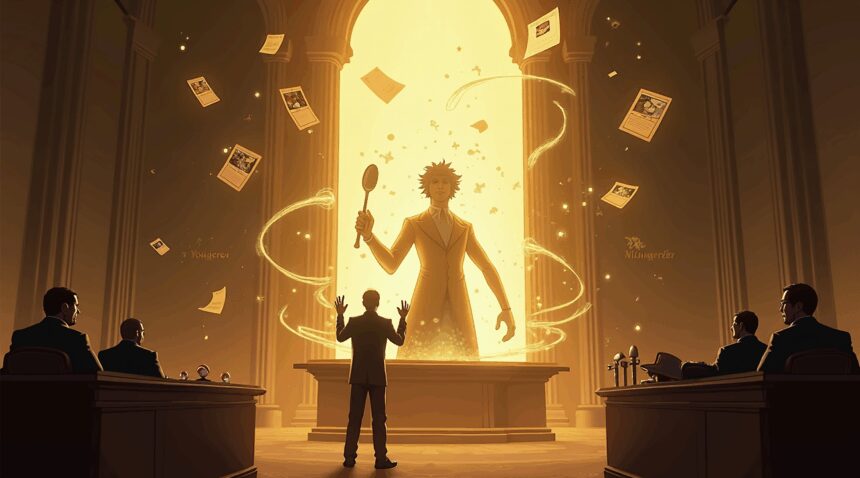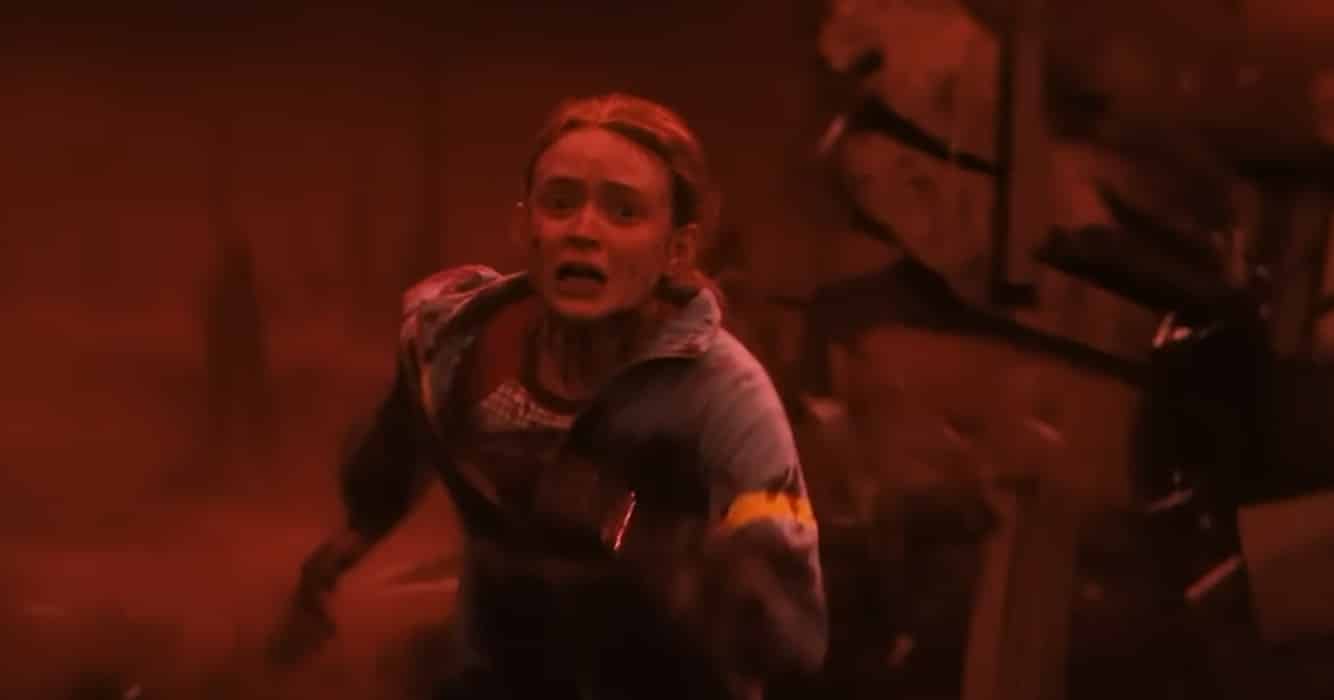Uri Geller filed a lawsuit against Nintendo in 2000, arguing that Kadabra used his likeness and name without permission.
The famous illusionist objected to Kadabra’s signature spoon-bending abilities and the Pokémon’s Japanese name, “Yungerer,” which closely resembled his surname. This legal battle led to an extraordinary absence of the character from the Pokémon Trading Card Game (TCG) for 21 years. The situation only saw resolution in 2020 when Geller announced he had changed his mind, allowing Kadabra to reappear in future publications.
Key Takeaways
- Uri Geller sued Nintendo in 2000 over what he believed was an unauthorized use of his identity in the form of Kadabra’s design and name.
- Nintendo removed Kadabra from the TCG entirely to avoid continuing the legal conflict, marking an unprecedented move in the franchise’s history.
- The 21-year ban extended to more than just trading cards, encompassing anime appearances and promotional materials, making Kadabra a unique case.
- Fan petitions and community efforts played a major role over the decades, ultimately influencing Geller’s decision to allow the character’s return.
- Kadabra rejoined the Pokémon TCG in 2023 with the release of the ‘151’ set, finally bringing closure to one of pop culture’s longest celebrity-character disputes.
More details on this historic return can be found on outlets such as Nintendo Life, which covered Geller’s public statement and the fan response.
Uri Geller’s Lawsuit That Shook the Pokemon World
The Pokemon Trading Card Game faced one of its most unusual legal challenges in 2000 when renowned illusionist Uri Geller filed a lawsuit against Nintendo. Geller claimed the company had used his likeness and name without proper authorization, setting off a chain of events that would permanently alter Pokemon history.
The Core of Geller’s Legal Challenge
Geller’s lawsuit centered on several key allegations that connected Kadabra directly to his public persona and career. The illusionist argued that Kadabra’s signature spoon-bending abilities mirrored his most famous performances, creating an unauthorized connection between his real-world act and the Pokemon character. Additionally, Geller took issue with the Pokemon’s name itself, which bore striking similarities to his own moniker in various international markets.
The situation escalated when Geller examined specific card artwork that portrayed Kadabra in what he considered an offensive manner. The ‘Dark Kadabra’ card from the Team Rocket set proved particularly problematic, as its Japanese name ‘Evil Yungerer’ contained even more direct references to the performer. Geller objected strongly to what he perceived as an “evil, occult” depiction of a character based on his likeness, arguing that such portrayals could damage his reputation and misrepresent his work to millions of fans worldwide.
The legal action represented more than just a copyright dispute — it highlighted the complex relationship between real-world personalities and fictional characters. Geller’s concerns extended beyond simple name usage to encompass how his professional image was being interpreted and commercialized without his consent. The lawsuit gained significant attention, particularly given the massive popularity of Pokemon during that era and Geller’s own celebrity status.
Nintendo faced a difficult decision when confronted with the lawsuit. Rather than engaging in a prolonged legal battle that could have drawn unwanted attention and potentially set unfavorable precedents, the company chose a different path. Reports indicate that no financial compensation changed hands as part of the resolution, but Nintendo made a significant concession that would have lasting implications for the franchise.
The company agreed to stop printing Kadabra cards entirely, effectively removing the Pokemon from the Trading Card Game. This decision extended beyond just the TCG — Kadabra also disappeared from anime appearances, creating a notable absence that fans would notice for years to come. The removal wasn’t limited to future releases; it applied comprehensively across all Pokemon media where Nintendo had control.
An Unprecedented Decision in Pokemon History
This resolution created an unprecedented situation in Pokemon history. While other Pokemon have faced temporary restrictions or modifications due to various concerns, Kadabra’s removal represented the first and only instance where legal action from a real person resulted in a character’s complete elimination from major Pokemon products. The decision affected not just collectors and players, but also the competitive scene, as Kadabra had served as an important transitional Pokemon between Abra and Alakazam.
The lawsuit’s impact extended far beyond the immediate parties involved. It demonstrated how intellectual property concerns could intersect with popular entertainment in unexpected ways, particularly as media franchises increasingly drew inspiration from real-world figures and phenomena. For Pokemon fans, the absence of Kadabra created a notable gap in card collections and evolutionary lines that persists to this day, making pre-2000 Kadabra cards particularly valuable among collectors.
Long-Term Consequences for the Industry
The case also influenced how entertainment companies approach character creation and naming, encouraging more careful consideration of potential real-world connections that could lead to similar legal challenges. Legal disputes involving Pokemon would continue to emerge in various forms, but none would result in such a complete character removal as Geller’s successful challenge.
The Unmistakable Connection Between Kadabra and Uri Geller
Kadabra stands as one of Generation 1’s most recognizable Psychic-type Pokémon, largely due to its distinctive spoon-bending pose that became synonymous with psychic abilities in popular culture. This particular design choice wasn’t coincidental—it directly references the famous performances of renowned illusionist Uri Geller, who captivated audiences worldwide with his alleged ability to bend spoons using only his mind.
The connection between Kadabra and Geller becomes even more apparent when examining the Pokémon’s original Japanese name. In Japan, this psychic Pokémon is called ‘Yungerer’, which bears an unmistakable resemblance to Uri Geller’s name as it appears in Japanese: ‘Yuri Gera’. This naming convention clearly demonstrates Nintendo’s intention to pay homage to the famous performer, though this tribute would later become the source of significant legal complications.
Visual References and Design Elements
Kadabra’s most prominent design feature centers around the bent spoon it carries, which serves as both a weapon and a symbol of its psychic prowess. Game Freak’s designers deliberately incorporated this element to mirror Geller’s signature spoon-bending demonstrations, which became his trademark performance piece during television appearances and live shows throughout the 1970s and beyond.
The Pokémon’s pose and stance also echo Geller’s theatrical presentation style. Kadabra often appears in official artwork with one hand extended, mimicking the concentration poses that Geller would adopt during his performances. Even the star-shaped symbol on Kadabra’s forehead can be interpreted as a reference to mystical and psychic imagery commonly associated with stage mentalists and illusionists of Geller’s era.
These design choices weren’t subtle nods—they represented a clear artistic interpretation of Geller’s public persona. Every time players encountered Kadabra in games, whether through Pokemon Crystal or other titles, they were essentially seeing Nintendo’s tribute to one of the most famous mentalist performers in modern history.
The spoon itself carries deeper significance within Kadabra’s character design. According to Pokédex entries across various games, Kadabra’s psychic powers are so intense that they can cause electronic devices to malfunction and create interference with sensitive equipment. This description parallels claims made about Geller’s abilities, where his presence allegedly affected watches, computers, and other electronic devices during his performances.
Furthermore, Kadabra’s evolution line reinforces this connection:
- Abra: Represents the beginning stages of psychic development.
- Kadabra: Displays intermediate control and abilities, signified by its spoon and symbols.
- Alakazam: Symbolizes mastery of mental powers, often depicted wielding two spoons.
This progression mirrors the narrative arc often presented in discussions about real-world psychic phenomena, where practitioners supposedly develop their abilities over time.
The influence extends beyond just visual design elements. Kadabra’s Pokédex entries frequently mention its ability to bend spoons and other metal objects, directly referencing Geller’s most famous demonstrations. These descriptions cement the connection between the fictional creature and the real-world performer, making it impossible to view Kadabra without thinking of Uri Geller’s influence on its creation.
Game Freak’s decision to incorporate these references reflected the cultural impact that Geller had during the height of his fame. His appearances on television shows and his claims about supernatural abilities made him a household name, particularly in Japan where paranormal phenomena often capture public imagination. By creating Kadabra as an homage to Geller, the developers were tapping into this cultural zeitgeist and bringing it into the Pokémon universe.
This artistic tribute, however well-intentioned, would eventually lead to legal action that would change Kadabra’s presence in the trading card game forever. The very elements that made Kadabra such a memorable and culturally relevant Pokémon would become the foundation for one of the most significant legal disputes in gaming history.

How the Ban Changed Pokemon for Over Two Decades
The legal dispute with Uri Geller created an unprecedented 21-year absence that fundamentally altered how Pokemon handled one of its most recognizable psychic-type creatures. From approximately 2000 to 2021, Kadabra vanished from virtually all Pokemon media, creating a unique gap in the franchise’s otherwise comprehensive character roster.
The Complete Media Blackout
Pokemon Company’s response to the legal threat was comprehensive and far-reaching. In the Trading Card Game, no new Kadabra cards appeared after the early 2000s, forcing players to rely on older prints or find alternative strategies for their psychic-type decks. I’ve observed how this absence particularly affected competitive play, as collectors and players had to work around a missing evolutionary link.
The anime treatment proved even more dramatic. Kadabra disappeared completely after 2005, despite its evolutionary relatives Abra and Alakazam continuing to appear regularly in episodes. This created an awkward narrative gap where trainers would somehow skip directly from Abra to Alakazam without explanation, or producers simply avoided storylines involving the complete evolutionary line altogether.
Video games presented the most interesting workaround. While Kadabra remained available for capture and use, Generation IV onwards implemented a curious restriction: Kadabra couldn’t hold an Everstone to prevent evolution during trading. This technical limitation likely served as a safeguard to minimize any potential legal complications around the character’s depiction and commercial use.
The ban’s effects rippled through Pokemon’s merchandising as well. Action figures, plushies, and other collectibles featuring Kadabra became increasingly rare, making existing items more valuable among collectors. Classic games that featured Kadabra prominently gained additional nostalgic value as the character’s absence stretched on.
Perhaps most significantly, the situation demonstrated how external legal pressures could fundamentally reshape a global entertainment franchise. Pokemon Company’s cautious approach reflected the high stakes involved when dealing with intellectual property disputes, especially given the franchise’s massive international reach and commercial success.
The ban also highlighted the complex relationship between real-world personalities and fictional characters. While Pokemon’s main characters continued their adventures, Kadabra remained frozen in legal limbo, creating one of the most unusual censorship cases in gaming history.
This unprecedented situation lasted until 2021, when Geller finally gave permission for Kadabra’s return, ending one of the longest-running disputes between a celebrity and a fictional character in entertainment history.
Pokemon Fans Fought Back With Petition Campaigns
The Pokemon community couldn’t accept Kadabra’s indefinite absence from the trading card game. Years of mounting frustration eventually transformed into organized action as fans across the globe began demanding answers and pushing for change.
Organized Community Efforts
PokéBeach emerged as a central hub for coordinated campaigns aimed at convincing Uri Geller to reconsider his position. The popular Pokemon forum organized concentrated efforts that encouraged community members to reach out directly to Geller through various channels. These campaigns weren’t random acts of fan desperation – they represented calculated attempts to demonstrate the genuine passion and disappointment felt by collectors who had grown up with the Psychic-type Pokemon.
Petition drives gained momentum across multiple platforms, with thousands of signatures accumulating from frustrated fans. The campaigns highlighted several key points:
- The emotional connection fans had developed with Kadabra over decades
- The completionist nature of Pokemon collecting being disrupted by the ban
- The cultural significance of Kadabra within the broader Pokemon ecosystem
- Appeals to Geller’s potential understanding of fan dedication
These grassroots movements showed remarkable persistence, continuing for years despite limited initial responses from either Geller or The Pokemon Company.
Official Acknowledgment of the Legal Reality
The community’s efforts eventually forced official acknowledgment of what many had suspected. Pokemon anime director Masamitsu Hidaka provided clear confirmation that Geller’s lawsuit remained the explicit reason behind Kadabra’s continued absence from the TCG. This statement validated years of fan speculation while simultaneously highlighting the legal constraints facing Pokemon’s creators.
Hidaka’s acknowledgment carried significant weight within the community. His position as anime director lent credibility to what had previously been treated as unofficial information. The confirmation also demonstrated that Pokemon’s creative team remained aware of fan concerns and weren’t simply ignoring the situation.
The official statements created a double-edged situation for the Pokemon community. While fans finally received concrete confirmation about Kadabra’s legal status, they also understood that resolution required Geller’s cooperation rather than corporate decision-making. This reality shifted petition focus from Pokemon officials to Geller himself, with campaigns emphasizing respect for his concerns while requesting consideration for the millions of Pokemon fans affected by the ban.
Community pressure maintained steady momentum throughout the 2010s, with social media amplifying traditional petition methods. Twitter campaigns and Facebook groups supplemented forum-based efforts, creating a multi-platform approach that kept Kadabra’s situation visible within Pokemon discourse. The sustained nature of these campaigns demonstrated the depth of fan commitment and helped maintain awareness of the issue even as other Pokemon games continued releasing without the Psychic-type.
The petition campaigns also educated newer Pokemon fans about the situation’s complexity. Many players who had started with later generations learned about Kadabra’s legal troubles through these community efforts, expanding the base of supporters calling for resolution. This educational aspect proved crucial in maintaining long-term pressure and preventing the issue from fading into obscurity.
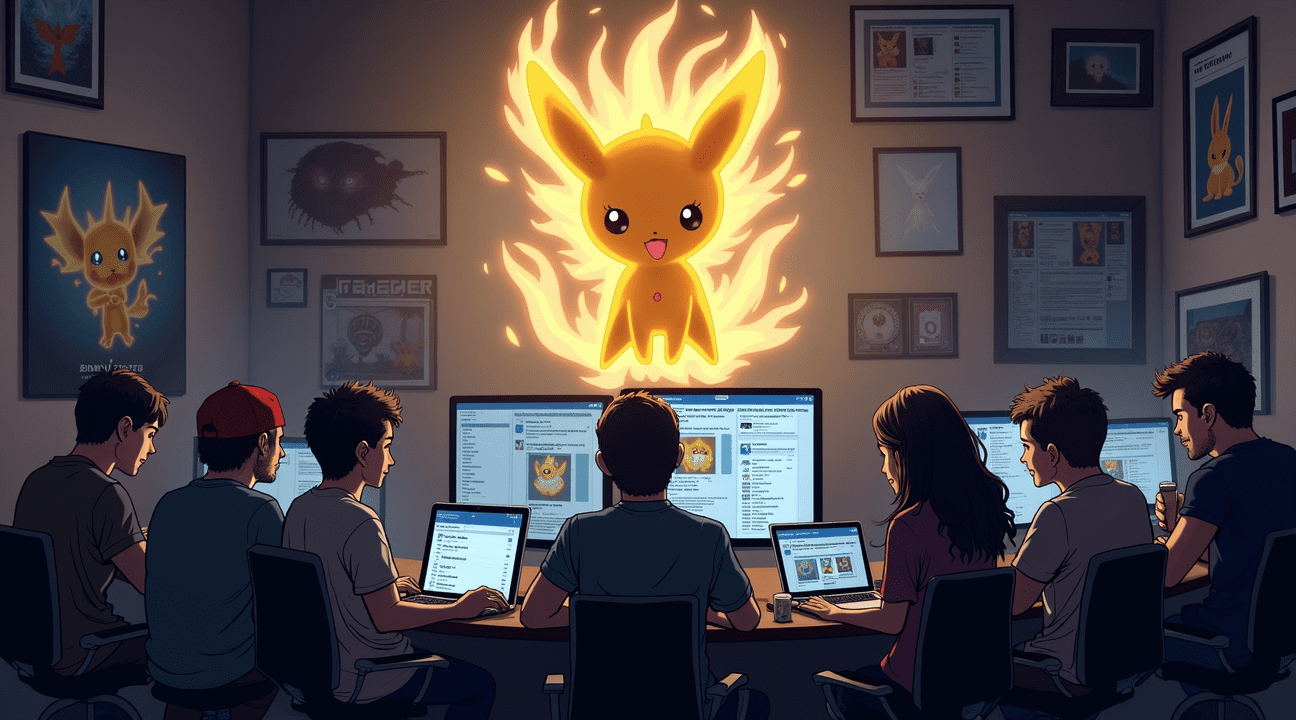
Uri Geller’s Surprising Change of Heart in 2020
After nearly two decades of blocking Kadabra’s presence in the trading card game, Uri Geller made an unexpected announcement in November 2020 that caught the Pokémon community completely off guard. The famous spoon-bending psychic publicly declared his intention to allow Nintendo to resume using Kadabra in their card sets.
Geller’s reversal came after years of reflection on his original decision to pursue legal action. He openly expressed regret about the lawsuit, acknowledging that his stance had disappointed countless fans around the world. The psychic revealed that his family members had influenced his thinking over the years, helping him understand the broader impact of keeping Kadabra locked away from official card releases.
Fan Pressure and Personal Reflection
The constant stream of requests from Pokémon enthusiasts played a significant role in Geller’s decision-making process. Fans had bombarded him with messages across social media platforms for years, explaining how much Kadabra meant to them and expressing frustration over the character’s absence from new card sets. These passionate pleas from collectors and players eventually wore down Geller’s resolve to maintain his legal position.
Geller also admitted that he had come to view his original lawsuit differently as he aged. What once seemed like a clear case of unauthorized use of his likeness now appeared to him as an overreaction that had harmed innocent fans who simply wanted to enjoy their favorite psychic-type Pokémon in card form.
Formal Permission and Corporate Response
Making his change of heart official, Geller sent a formal letter to The Pokémon Company granting explicit permission for them to feature Kadabra in future trading card sets. This letter marked the first time since 2000 that the company had clear legal authorization to print new Kadabra cards without fear of litigation.
The response from Pokémon’s leadership came swiftly and graciously. Tsunekazu Ishihara, president of The Pokémon Company, personally sent Geller a letter acknowledging his decision and expressing gratitude for the gesture. This exchange represented a remarkable resolution to one of the most unusual legal disputes in gaming history, ending a standoff that had persisted longer than Ash’s championship journey.
Geller’s announcement sent shockwaves through online Pokémon communities, where fans had almost given up hope of ever seeing new Kadabra cards again. Many collectors who had been holding onto vintage Kadabra cards suddenly found themselves wondering whether their investments would maintain their inflated values once new printings became available again.
The timing of Geller’s announcement seemed particularly poignant, coming during a period when many people were reassessing their priorities due to global events. His willingness to admit fault and make amends demonstrated a level of personal growth that resonated with fans who had been frustrated by the situation for so long.
This dramatic shift in Geller’s position opened the door for The Pokémon Company to potentially reintegrate Kadabra into their regular card rotation, though the company would still need to decide how and when to bring the psychic Pokémon back into print. The legal barrier that had kept Kadabra in limbo was finally removed, but questions remained about whether the company would immediately capitalize on this newfound freedom or take a more measured approach to the character’s return.
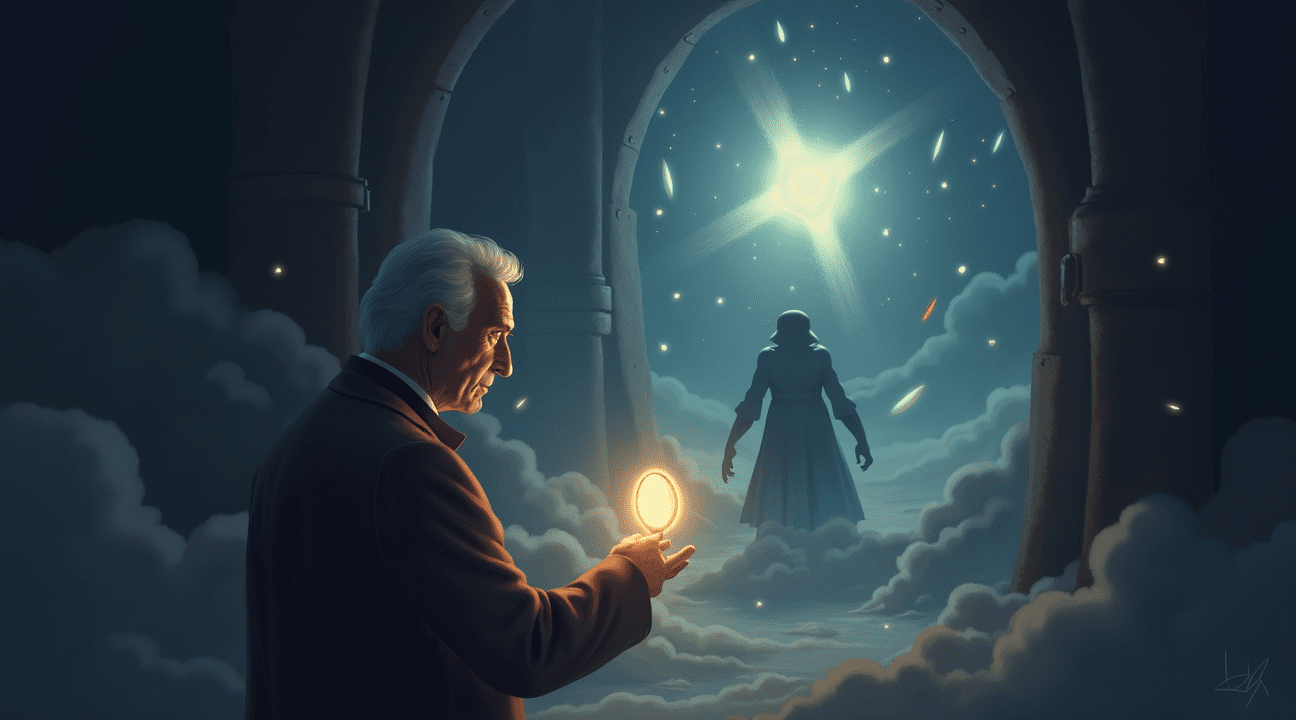
Kadabra’s Official Return After 21 Years
After more than two decades of absence, Kadabra has finally returned to the Pokémon Trading Card Game through the highly anticipated ‘151’ set in 2023. This marks a monumental moment for collectors and players who witnessed one of the most unusual bans in gaming history.
The Timeline of Kadabra’s Exile
The controversy began in 2000 when Uri Geller filed a lawsuit against Nintendo, claiming the Kadabra character infringed on his likeness and personality rights. Geller’s legal action had immediate and far-reaching consequences that extended beyond just the trading card game. Kadabra disappeared from the TCG entirely, and its appearances in the anime also came to an abrupt halt. I watched as Pokemon Crystal remained one of the last games where players could freely use Kadabra without any external interference affecting its representation.
For 21 consecutive years, from 2000 to 2021, no new Kadabra cards were printed for the Pokémon TCG. This created a unique situation where an entire evolutionary line was essentially broken – players could obtain Abra cards and Alakazam cards, but the crucial middle evolution remained missing. The absence became so normalized that newer players often didn’t realize Kadabra cards had ever existed in the first place.
The Path to Redemption
The turning point came in 2020 when Uri Geller made a surprising announcement through a public statement, officially lifting his ban on Kadabra’s use in Pokémon media. Geller’s change of heart represented a significant shift in his stance, potentially influenced by decades of fan disappointment and the character’s continued popularity despite its absence from official materials.
Following Geller’s statement, anticipation grew among the Pokémon community about when and how Kadabra would make its return. The wait finally ended in 2023 when The Pokémon Company confirmed that Kadabra would appear in the TCG ‘151’ set, a special collection celebrating the original 151 Pokémon from the Kanto region.
This return carries special significance because it completes the Abra evolutionary line for the first time in over two decades. Collectors who remember the original Base Set and its expansions can finally obtain modern versions of all three evolutionary stages. The ‘151’ set serves as both a nostalgic tribute and a practical solution to one of the TCG’s longest-standing gaps.
Players who have been involved with the franchise since its early days understand the magnitude of this return. I’ve observed how the absence of Kadabra created awkward deck-building situations and left many feeling like something was fundamentally incomplete about their collections. The character’s return in 2023 represents closure for a controversy that spanned multiple generations of players.
The legal resolution and subsequent return also demonstrates how intellectual property disputes can evolve over time. While other legal battles continue to shape the gaming industry, Kadabra’s situation shows that even long-standing conflicts can find resolution through changing perspectives and mutual understanding.
Modern players entering the TCG scene might not fully grasp the historical significance of Kadabra’s return, but veteran collectors and competitive players recognize this as one of the most important card releases in recent memory. The 2023 comeback effectively ends one of the strangest chapters in Pokémon history and restores balance to both competitive play and collecting pursuits.
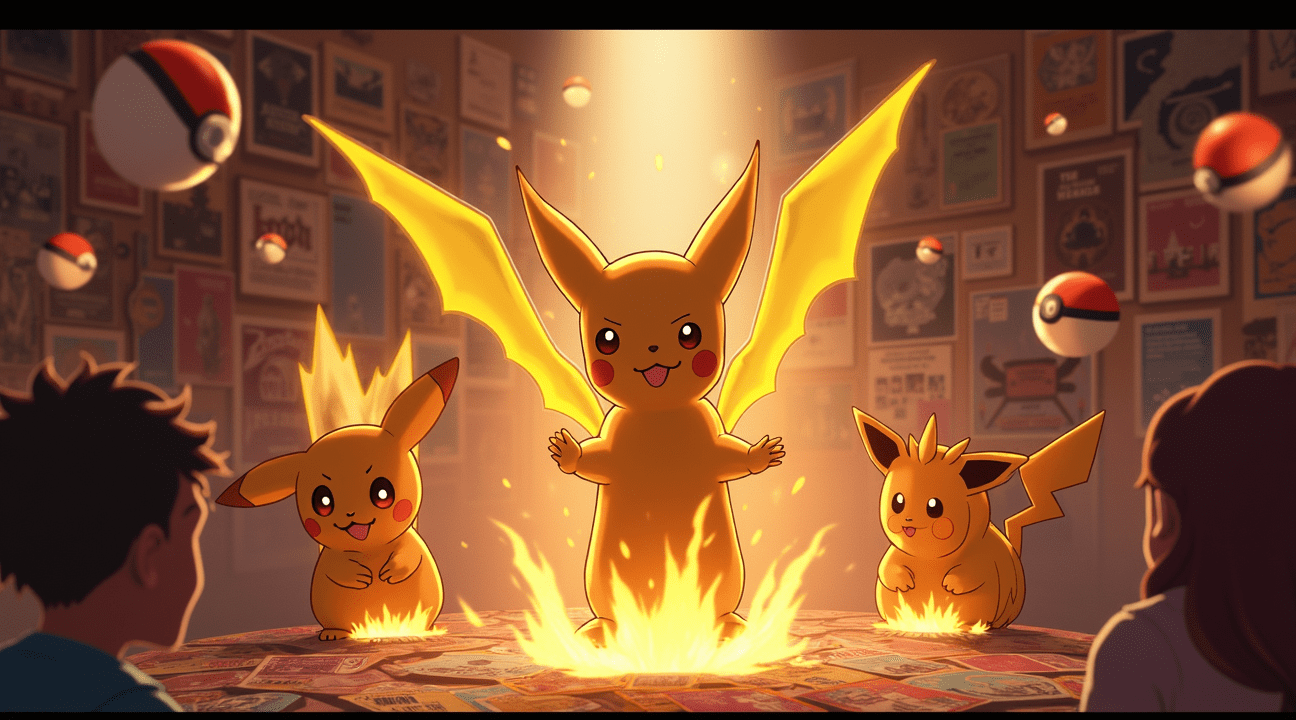
Sources:
YouTube: “This Pokémon was BANNED for 17 Years” (2022)
PokéBeach: “After 21 Years, Kadabra Officially Returning to the Pokemon TCG in Pokémon Card 151” (2023)
Game Rant: “Why the Pokemon Anime Left Kadabra Out for So Long” (2021)
Hypebeast: “Kadabra ‘Pokémon TCG’ Card Returning After 21 Years” (2023)
TheGamer: “Why There Hasn’t Been A Kadabra Pokemon Card For Almost 20 Years” (2020)

